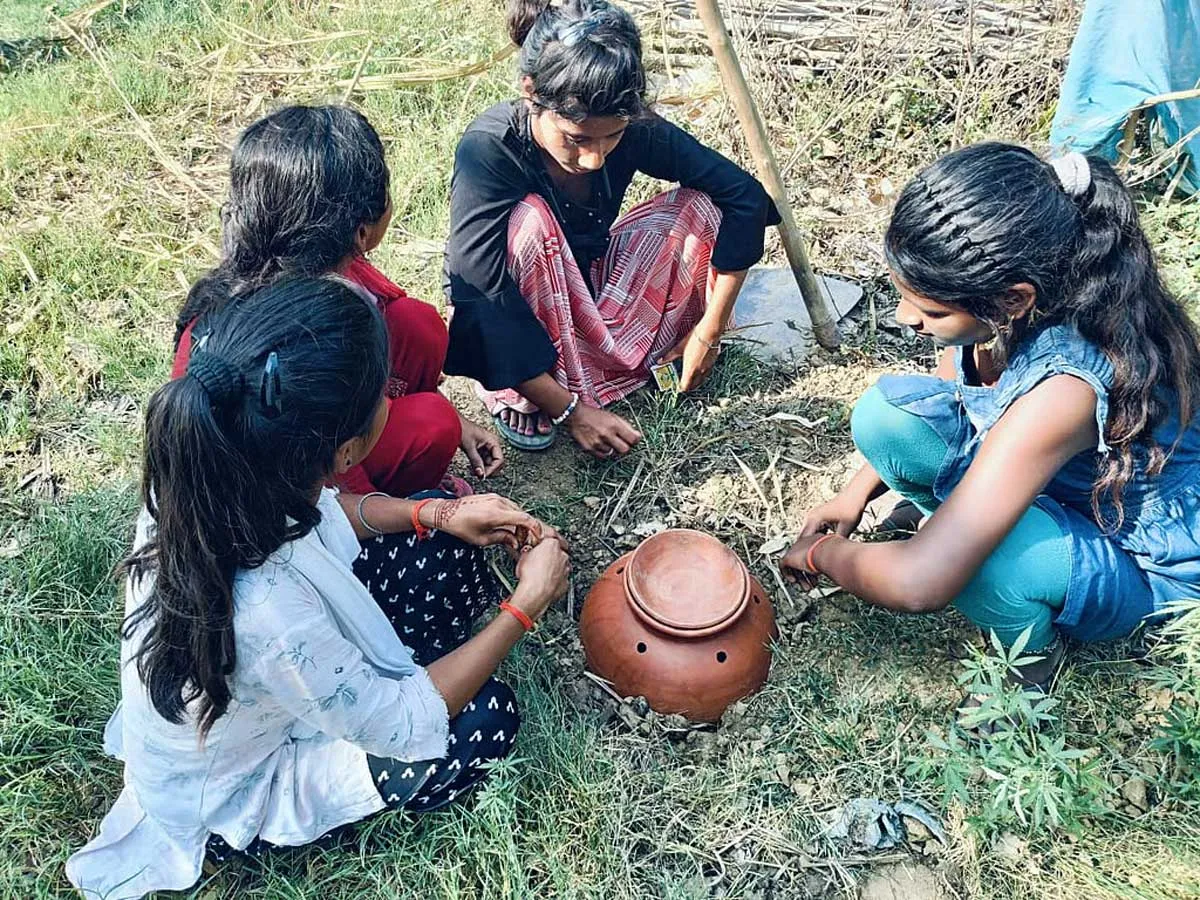A path-breaking grassroots initiative is paving the way for sustainable menstrual waste disposal among adolescent girls in rural Uttar Pradesh. Local organisations AIM Trust and Samagra Vikas Sansthan (SVS), with technical support from CRY – Child Rights and You, have introduced eco-friendly “Matka Incinerators” — a cost-effective and community-centred solution for menstrual waste management.
Co-created with the help of local potters, the innovation uses traditional earthenware to create incinerator pots that safely dispose of sanitary pads while minimising environmental harm. These incinerators are expected to benefit over 3,000–4,000 adolescent girls across 70 villages in the Lakhimpur Kheri and Badaun districts.
“In many rural areas, the improper disposal of menstrual products poses long-term environmental and health hazards,” said Soha Moitra, director of programmes and regional operations (North) at CRY. “The Matka Incinerator is an example of how tradition and innovation can come together to offer eco-conscious, scalable solutions.”
Urgent Need
Data from NFHS-5 (2019–21), analysed by UNFPA India, reveals that while 64.5 per cent of adolescent girls use sanitary napkins, 49.3 per cent still rely on cloth, and 15.2 per cent use locally prepared alternatives. Disposal, however, remains largely unregulated, with many resorting to unsafe open dumping or burning practices, contributing to ecological degradation and social stigma.
“Our solution addresses both menstrual hygiene and environmental sustainability,” said Sanjay Rai, director of AIM Trust. “We’re not just placing incinerators — we’re reshaping awareness and behaviours.”
By Them, For Them
Two versions of the Matka Incinerator are being rolled out: one for individual or small group use (10–15 pads per day), and another larger version for communal use (up to 100 pads a day). These will be strategically located near Anganwadi centres, schools, and health posts for easy access.
“By producing these incinerators using local materials and engaging local potters, we’re also boosting rural livelihoods,” noted Rajkumar Sharma, director of SVS. “It’s a circular solution with social, environmental, and economic impacts.”
How It Works
The Matka incinerator is designed with the help of indigenous knowledge and lessons from environmentally less harmful solid waste management. It is essentially a clay pot with multiple pores to maintain the flow of oxygen and carbon dioxide. A hole is dug in the ground, and the pot is placed in it so that the pores at the top remain open. The Matka is then covered with a layer of wet mud. A layer of small dry firewood chips and paper is placed inside, followed by a layer of discarded sanitary pads, another layer of firewood and paper, and then covered with a lid. Fire is applied through one of the open pores to safely burn the waste with a minimal carbon footprint. After incineration, a second hole is dug beside it to bury the remains.
According to the State Pollution Control Board guidelines, the sale and operation of clay pot incinerators for sanitary napkin disposal are allowed and promoted in remote locations or areas without access to common incinerators.
Voices From the Ground
Far from being passive beneficiaries, girls have actively participated in the development and rollout of the initiative through local adolescent groups like Kishori Manch. Their advocacy and leadership have been instrumental in shaping the intervention and influencing wider community dialogue around menstrual health.
One adolescent leader shared, “We’ve long suffered from unsafe disposal practices. This simple, cost-effective Matka Incinerator lets us dispose of pads without harming the environment or feeling ashamed.”
Local educators are also championing the cause. Rajneesh Kumar, Principal of Composite School Naushera, Ujhani Block, Badaun, commented, “This initiative is transformative. It addresses pollution, dignity, and access. I’ve personally supported pad distribution and will advocate for these incinerators in my village.”
A Scalable Model
This effort is a compelling example of how coordinated action between local communities, community-based organisations, and public institutions can catalyse sustainable change. The model is ripe for replication in regions where menstrual hygiene management remains a challenge.
“This is about ensuring that all adolescent girls and women have the right to manage their period with hygiene, dignity, safety, and pride,” said Soha Moitra.
“As we encourage the community to use it, this innovation stands as a powerful reminder that sustainable solutions rooted in local realities are key to securing a healthier, cleaner, and more inclusive future for India’s girls,” she concluded.





















